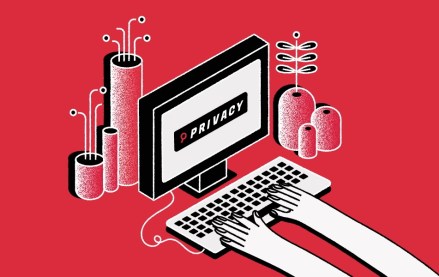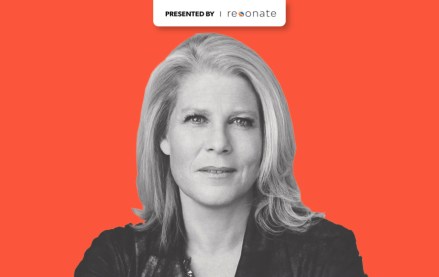
by Catherine Williams, chief data and marketplace officer, AppNexus
As AppNexus’ chief data and marketplace officer, Catherine Williams leads a team of analysts and data scientists who deliver critical tools and data analysis to measure and influence the success of AppNexus’ advertising marketplace. In a new Q&A, she shares her expertise in combating bad actors before they’ve defrauded advertisers.
Q: How does AppNexus define fraud?
Fraud is any behavior that misrepresents activity, traffic, or information about an advertising transaction. There are five common categories:
- Bot fraud involves ads that are transacted but have no chance of being seen by a human
- Domain and app spoofing (also known as misrepresentation) manipulates the information about the inventory to make it more appealing to legitimate buyers
- Evasion hijacks scripts that are used to verify impressions and falsifies the responses
- Cookie stuffing is a technique that attempts to wrongfully gain credit for purchases or conversions
- Metrics fraud boosts the performance metrics that buyers optimize to, using techniques such as artificial clicks or video completions
Fraud isn’t just a sell-side problem — buyers can also deploy similar techniques to manipulate metrics and inflate performance for their advertiser clients. A useful way to identify fraud is to think about incentives. Ask how bad actors can make more money, and you’ll begin to identify the fraud vectors.
Q: How do you think about fraud prevention versus fraud detection?
Prevention should be the first order of business. The key is to eliminate incentives to pursue fraud. That can only be done if we can stop spend from reaching bad actors. All sellers should have both business and technology controls to ensure the legitimacy of the traffic they sell. In particular, AppNexus enforces ads.txt and proactively audits our partners to ensure that we work with clients who share our deep commitment to advertiser and publisher value, and who consistently demonstrate the ability to maintain their inventory in accordance with our quality standards.
Detection also plays a crucial role, helping to monitor the performance of prevention systems over time. Detection also helps to control environments that can’t run all prevention systems — for instance, on devices that don’t permit JavaScript.
Q: Have any types of fraud become more pervasive in recent years?
Video is growing incredibly quickly across all digital platforms, so bad actors are incentivized to exploit it. For example, the Methbot scheme that was uncovered in 2016 exposed how lucrative video fraud can be. It also showed there was work to be done to bring prevention systems for video up to speed with those developed for display advertising.
Q: How have bad actors’ tactics evolved?
As more overt fraud is identified and prevented, the same bad actors are cooking up new ways to extract a share of digital ad budgets. Late last year we analyzed data from the more than 200 billion impressions that come across our platform every day. The study demonstrated that ad fraud and fake news are inextricably linked at the intersection of viral content and traffic generation.
Q: When it comes to fraud detection and enforcement, are there any areas of focus that have emerged more recently?
Fraud refunds and clawbacks are becoming more common in programmatic. Publishers are accustomed to reconciliation processes for their direct business, whether it’s “make goods” for under-delivery or other obligations. But the process for programmatic involves more parties in the supply chain. This makes fraud prevention doubly important: If we can prevent fraud from occurring, fewer manual operations are required to deal with it after the fact.
Q: What questions should publishers and advertisers be asking their tech partners about fraud prevention?
Publishers should carefully evaluate any partners they use to generate traffic, and the partners they include in their ads.txt files.
Advertisers, meanwhile, should understand their supply chain to make sure that their partners (both direct and indirect) have the proper prevention and detection systems in place. Press them on important questions like who leads their anti-fraud team, what techniques they use, who their partners are, and if they can confirm that all of them use adequate anti-fraud techniques. Finally, buyers should make sure they do not have to pay for fraud if it’s detected after an ad has been served.
Q: In June, AppNexus announced it would adopt White Ops’ technology to power pre-bid fraud prevention across AppNexus’ marketplace. Why did you decide to partner with White Ops?
We like White Ops because they are a cybersecurity company that provides solutions to the digital advertising ecosystem, rather than an ad tech company that built a fraud product. They’re focused on prevention and work with sellers to eliminate non-human traffic before it ever reaches the buyers.
Our company values are closely aligned — they want to eliminate fraud in digital advertising, and shut down the incentives for bad actors to pursue fraud. AppNexus has made major investments to eliminate fraud from our exchange. We hope others will follow suit to make ad fraud punitively expensive for criminals.
Q: What kinds of skills do you look for in building an effective data science team?
We look for folks who are technically proficient with both theory (math, stats, machine learning) and tools (python/pandas, scikit-learn, Spark, etc.), and who have an interest in understanding the business and platform context of their work. Plus, they need to be strong communicators, with the ability to translate business ideas into technical ones, and vice versa. An anti-fraud data science team needs a deeply curious, tenacious, forensic detective-like mindset.
More from Digiday

With a new ‘answer engine,’ Brave browser adds another generative AI tool for search
The privacy focused browser’s new tool is the latest to offer a synthesized summary for queries using its independent index.

NBA CMO Henault: How the league added music and fashion to its bench strength
Tammy Henault, CMO of the NBA, shared some of the strategies that helped the association stand out from other pro sports leagues.

‘Beginning to be the practical’: GE global CMO Linda Boff on the evolution of AI in marketing
Boff pointed to market research as an area where AI is beginning to have an impact, in a good way, on an industry feature that has lingered in the traditional.





